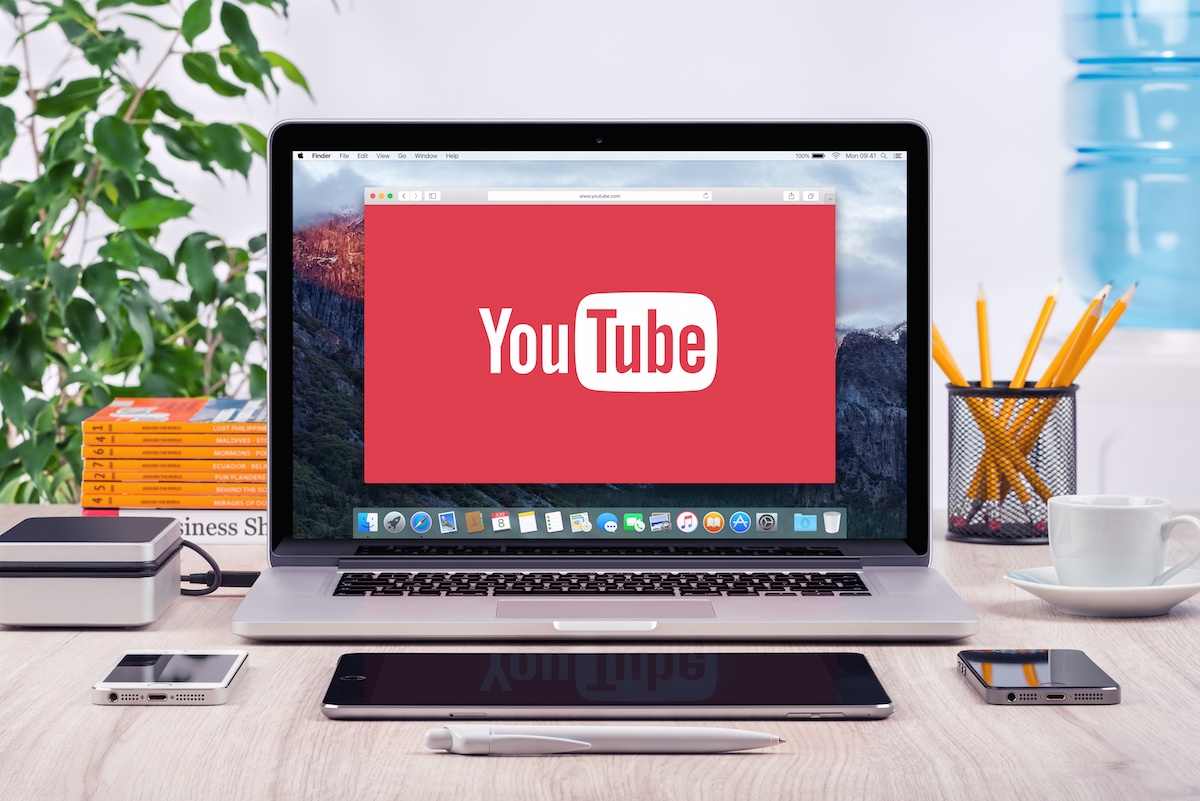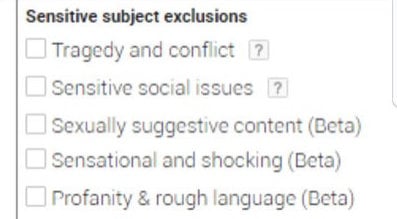
In one hand, YouTube is the most important video platform in the world, so for Google is one of its most valuable businesses: we can say that year after year it generates an approximate of $4,000,000,000 dollars. In addition, in 2017 the number of channels that generated profits of more than 1 million dollars grew 50%; and the investment of the top 100 of YT advertisers compared to last year grew 60%.
In the other hand, it's creators (vloggers and influencers) are also benefited by these figures, although it was better before: YouTube is the only company that pays its most popular users for creating views and traffic, even if they are not associated with any brand. Also, since 2007, YT has paid $1,250,000,000 for copyright.
Why do we say that vloggers no longer benefit as much as they used to? Due to the radical change in the YouTube algorithm.
What changed 2017?
In June, YouTube changed its video policies in order to keep calm certain brands, whose ads were automatically placed before inappropriate content. For this reason, the advertisers threatened a plot against the platform, so YT took action on the matter. Now, the advertisers are more careful choosing the contents.
The vloggers were not very satisfied, since some of their contents were no longer paid for including "improper" content. We will talk more about this later.
The tip of the iceberg
Now, everyone is talking about the changes in the Facebook or Google algorithm but nobody is talking about the YouTube one. As you could tell, it destabilized the "vlogosphere" in the middle of this year: what happened in June is just the tip of the iceberg of all the mysteries of YT algorithm. But first, let's see why it is important that both, brands and influencers, stay up to date on this platform. There is no doubt that it is one of the most powerful marketing tools. Look at the following data:
- If YouTube were a country, it would be the 3rd largest in the world, after China and India.
- It would have a 1,300,000,000 population with an average age of 25 and 44 years.
- To reach the same audience, Paul McCartney would have to fill the Estadio Azteca 40,000 times.
- It would generate $4,000,000,000 dollars a year.
- It would have a growth in the workforce (new channels) of 50%.
- Its population would increase 60% annually.
- 1 of every 2 people in the planet visits YouTube.
- Its monthly audience is 10 times larger than the Super Bowl.
- 5 billion videos are seen every day on YT.
- YT has a daily 30 million visitors.
- 8 out of 10 people between 18 and 49 years old watch YT per month.
- 6 out of 10 people prefer to watch online content than live TV.
- By 2025, half of the viewers under 32 will no longer subscribe to any pay TV service.
- Neer 3.25 billion hours of video are watched in YT per month.
- 80% of the YT content is produced outside the United States.
- 1,000,000,000 views are generated from mobile devices every day.
- People watch more than 40 minutes in mobile sessions, on average.
- More than half of YT's views come from mobile devices.
- The number of hours people spend watching YT videos grew 60% over last year.
- $54.4 million dollars has been given by YT to the highest paid creators since 2015.
- This year the number of channels that generated profits of more than 1 million dollars grew by 50%.
Why YouTube is so important?
YouTube is not just a place to watch kittens videos doing funny things; it is a cultural and commercial model that sets trends and attracts consumers because it transmits a sense of freedom: unlike traditional media, people who watch YT, they do it when they want and follow who they want, without any company impositions.
Understanding YouTube's algorithm is essential to achieve more views and engagement. Understanding the ads reach and discover more about consumer behavior it's also important. For this reason, we will explain how it works.
How does the algorithm work?
This algorithm goal is to determine what people see and where. As it's an automated system, its artificial intelligence "feeds" on the users' habits, behaviors, and interactions; therefore, it should always show what people want to see. In this way, trends and what appears on both the "dresser" (the home) and the site interior sections (related videos, suggested channels, etc.) are established.
There are 6 spaces in YT, which are determined by the algorithm and that can show (or not) your content:
- Search outcomes
- Home
- Suggested videos
- Notifications
- The most outstanding
- Under the viewer's subscriptions
To sum up, the content offer is so big (more than 400 hours of video are uploaded every minute) that YT must "polish" what each user watches, according to the users' tastes. Or at least that's what is on the contract.
What changed?
To "reward" or expose more content, the algorithm was based on the number of likes received, a metric that was very easy to master for vloggers and influencers, since they could ask their followers to give them likes in all their videos (or give comments and click play, etc.). If they collected a good number of likes, the video was "rewarded", this means the more views, the more benefits for the creators. In other words, the algorithm could be predicted and controlled.
However, since 2013, YouTube already takes into account other aspects to grade a video, besides the previous ones, for example:
- Time watched (both full channels and individual videos and history, so if one video didn't have enough views, the next could have problems positioning).
- Sessions watched: this means that the video can help people watching other videos, even if they are from other channels. YT wants people to spend as much time as possible on the site in general.
The goal is making the algorithm hard to tricked and that the content that people are really consuming is rewarded, while YouTube also grows as a platform thanks to the contents it shows. To do this, YT takes into account the engagement and not so much the number of clicks, so that those tricky and colorful thumbnails are no longer enough to achieve good results, but only to attract viewers.
How do these changes affect brands?
First, we will talk a bit of context: in YT, brands can only buy spaces in certain "categories" or "vertical" content; they do not know exactly where or at what time their ads will appear. This means advertisers can't decide if they appear before the content of a particular YouTuber. They will go at random in videos of a certain type that they can choose, for example, video games or beauty. This model contrasts with the TV model, where brands can choose which tv show and schedule or with which presenter to advertise, depending on their target.
But the YT model represents a "small" problem that has to do with the creators' freedom of expression: Google does not personally review each of the videos uploaded daily nor control their content. This means if a creator decides to change the category of his/her usual videos and decides to make, for example, a racist video, the system will not detect it and will place ads before that video. The affected brand will not be able to do anything until it may suffer a public relations crisis.
This happened for several months until the brands caught Google's attention in mid-2017; however, this has not been completely solved due to freedom of expression. For example, if a creator makes a video in the appropriate category, but that day he/she decides to say too much dirty language or feels sad and wants to tell the reasons, it may not help a brand to be associated with such feelings of anger or depression. Brands still can't choose when their ads will appear, even if is the category they chose, because the YouTubers behavior is unpredictable due to freedom of expression.
How do these changes affect YouTubers?
Now, there are no bad guys here, so the creators were also affected by this situation.
Initially, YT wanted to show them that they were on their side, so they included more video categories in the content that could be paid. In this way, several YouTubers began to make videos in different categories or to open more channels to increase their possibilities.
The problem is that the new system also included (in "beta phase") new reasons why content might be "inappropriate" for brands:

In other words, regardless their category, some videos might express feelings that they might have nothing wrong but could be "uncomfortable" for certain companies. One example of this are the LGBTTTIQ community contents (who were severely affected). Even if they do not spread negative messages, may be undesirable for companies that do not think the same.
As a result of what happened this year, vloggers began to notice that, while each ad was still giving them the same amount of money, they appeared less paid clips before their videos, so their income went down.
YT has been sympathetic with its creators because it knows that they are the responsible for making the platform grow. It has tried to implement quick solutions to not scare them away. However, it must also be "friendly" with the brands at the same time. Otherwise, YouTubers know that there isn't another platform that is as versatile and free as YT, so they depend a lot on it to take advantage of their creativity.
How to make these changes affect you as little as possible?
Now, if you are a creator, these tips will help you to be less affected by changes in the algorithm. Add these practices to your creative process and enjoy the outcomes:
- Take care of the time of your video: although YT takes into account the time watched, it is better for people to watch from start to finish a 30 seconds video instead of interrupting one that lasts 10 minutes.
- Beware of SEO: make an effort to write the titles, descriptions and appropriate labels that accurately convey what your video is about or what it is going to contribute to your life. Do not cheat, that will affect you more than you think. Avoid the clickbait.
- Add flashy thumbnails (previous images) to encourage the click.
- Make them fall in love with the video: catch the viewer from the beginning (remember you only have a few seconds), keep them interested, have good editing and rhythm, reward those who see you in certain way (you might teach them something new, make them laugh or surprise them, etc.).
- Increase your number of captive subscribers: according to Tubefilter, the more people watch your video in the first days after you upload it, the better the ranking. These people are usually your subscribers, since they may receive a notification when you upload something new.
- Create playlists: include your videos to make it easier for people to see them, but also add other people's videos, because remember that you can be rewarded if more people spend more time in YT.
- Become an expert in YouTube Analytics: see what content worked best for you and try to repeat the same formula in the following contents.
Go to the experts
YouTube and its creators have a lot of power, but it takes an expert to interpret the algorithm in favor of business goals. Before deciding to work with a specific YouTuber, all the variables that position him/her on YouTube should be taken into account to know if it is the right one. Come with us if you have any questions.
Sources:
https://www.polygon.com/2017/5/10/15609660/youtube-youtuber-ad-money-google
https://creatoracademy.youtube.com/page/lesson/discovery?hl=en-GB#yt-creators-strategies-1
https://blog.hootsuite.com/es/algoritmo-de-youtube/
https://research.google.com/pubs/pub45530.html
https://creatoracademy.youtube.com/page/lesson/thumbnails
http://www.tubefilter.com/2016/06/23/reverse-engineering-youtube-algorithm/

